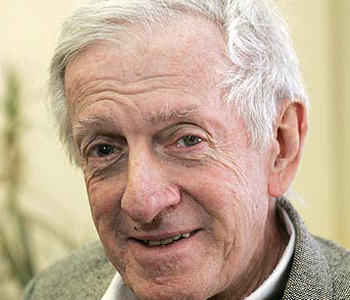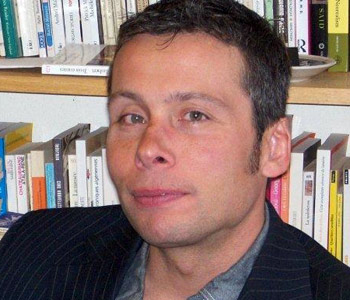Barbara Will
Unlikely Collaboration: Gertrude Stein, Bernard Faÿ, and the Vichy Dilemma
Columbia University Press
320 pages, 6 x 9 inches
ISBN 978 0231152624
Unlikely Collaboration is a study of the unlikely attraction of modernist intellectuals and artists to fascist and authoritarian regimes in the twentieth century. Its focus is on the particular experience of two individuals: the American modernist writer Gertrude Stein and the French modernist intellectual Bernard Faÿ.
Friends and fellow travelers since the 1920s, Stein and Faÿ deepened their connection through their mutual attraction to reactionary politics as the 1930s went on. By the time France was invaded by the Nazis in June of 1940, both Stein and Faÿ decided to throw their support behind Philippe Pétain, the Vichy head of state who promoted a politics of collaboration with the Nazis.
During the second World War, Stein produced propaganda in support of Pétain and Faÿ directed the secret Vichy police service entrusted with the repression of French freemasons. After the war, Stein—whose propaganda projects were largely repressed or forgotten by 1945—was hailed in the American press as a survivor. Faÿ, on the other hand, was sentenced by a French court to life in prison at hard labor.
Their story—from gay Paris in the 1920s to wartime privation in the 1940s to Bernard Faÿ’s postwar escape from prison in 1951—is a dramatic tale that has many points of entry. The personal dynamic between Stein and Faÿ is compelling in itself, but these figures also serve as case studies for larger concerns: about the place of America in the Vichy imagination; about the historical imagination behind the critique of modernity; and crucially, about the intersection of modernism and fascism.
The recent controversies surrounding the wartime writings of Paul de Man, Martin Heidegger, Ezra Pound, and others have forced us to rethink what it was that drew so many modernist writers, artists and intellectuals toward fascist or authoritarian ideologies.
Gertrude Stein, a Jewish American experimental writer and famous patron of modernist art, would seem the least likely person to write propaganda in support of a pro-Nazi authoritarian regime. Bernard Faÿ, a writer, translator, historian, and aesthete, also seems far from our image of a Vichy official and Gestapo agent. Yet both—in different ways and degrees—were drawn toward the compromised world of Vichy France.
In coming to terms with the choices they made, Unlikely Collaboration asks how troubled times bring out unlikely affinities.
This book emerged out of a sense of uncertainty as to how to understand the years that Gertrude Stein spent in Vichy, France, from 1940 through 1944.
My previous book on Stein and modernism had ended with the period of the 1930s, at the moment when Stein achieved public success as a result of The Autobiography of Alice B. Toklas. This achievement seemed to be the defining feature of Stein’s late life and work; at the time, little was known about her experience in Europe during World War II outside of Stein’s own retrospective account in a book published in 1945, Wars I Have Seen.
Then, in 1996, an American graduate student named Wanda Van Dusen began raising uncomfortable questions about an unfinished manuscript that few knew about and no one had really confronted: a project started by Stein during the war to translate into English the speeches of Philippe Pétain, Vichy head of state.
Stein, it turns out, was like many French people a strong supporter of Pétain at the start of the war, but unlike many French (and certainly unlike many Jews), her support continued well into 1943—long after Pétain had fallen out of favor. Even after the war, Stein can be seen saying complimentary things about Pétain, in Wars I Have Seen and elsewhere.
The impetus behind this book was to understand how and why Stein would have been drawn to Pétain. Following the lead of others, I found myself looking more closely at Stein’s friendship with the man who may have drawn her into the orbit of Vichy, a French historian named Bernard Faÿ. As I researched their friendship, I became increasingly aware of shared affinities and trajectories. I began to understand not only why these two individuals would have been drawn toward supporting the Vichy regime but also how their relationship with one another over the course of many years nurtured and refined their political beliefs. The story behind Stein’s attraction to Pétain, I realized, could only be told through her relationship with Bernard Faÿ.
But this story is also a larger story of modernism. For the last fifteen years or so, there have been a slew of revisionist accounts of canonical modernist writers and artists. Critics are starting to come to terms with the fact that many of the most creative, original, and experimental writers, artists, and philosophers of the modernist period—Ezra Pound, W. B. Yeats, T. S. Eliot, Louis-Ferdinand Céline, Martin Heidegger, Paul de Man, Leni Riefenstahl, to name just a few—were all supporters of fascist, profascist, or authoritarian regimes during the 1930s and 1940s. We want our great artists to be clean, but many of them, it appears, were not exactly that.
What was it that drew these thinkers toward such regimes? My book sees Stein and Faÿ as case studies of this larger phenomenon, arguing that there is no necessary correspondence between avant-garde or radical thought and progressive politics. Indeed, in uncertain times, the avant-garde can sometimes take on rear-guard or reactionary positions. Being attentive to the particular reactionary agendas of Stein and Faÿ—including their idealization of the eighteenth-century and their sense of Pétain as a revolutionary war hero—allows us a deeper and more nuanced understanding of the broader points of convergence between modernism and fascism or authoritarianism.
The intense, warm, almost passionate friendship of Gertrude Stein and Bernard Faÿ can be seen in a couple of exchanges during the 1930s. This is a letter Stein wrote to Faÿ in 1933 after hearing him lecture:
“My dear Bernard,
When I got home just a little tired I realized fully how moved and passionately interested I had been. It was an extraordinary experience. I was living in you and living in the thing and for once in my life almost not living in myself. A strange and very moving xperience and giving me quite a new point of view toward life…contact with your mind is comforting and stimulating, and nothing is more deeply satisfying to me than that. We do mean a great deal to each other.
Always, Gtde”
The style here is more than a little reminiscent of sentimental Victorian exchanges between female friends, a genre that Stein herself experimented with in her early lesbian novella Q.E.D. In her letter to Faÿ, Stein, like a lover, presents herself as a supplicant and pupil to her beloved: it is Faÿ who gives Stein “a new point of view toward life” much like the protagonist toward her lover in Q.E.D.
This dynamic, I argue, also lies at the heart of Stein and Faÿ’s mutual and mutually-reinforcing attraction to reactionary politics. According to James Laughlin, a friend of Stein and Faÿ, the two old friends enjoyed conversing with one another and conversation often veered toward politics:
“An exchange I heard one night troubled me…They got on the subject of Hitler, speaking of him as a great man, one perhaps to be compared with Napoleon. I was stunned. Hitler’s persecution of the Jews was well publicized in France by that time, and Miss Stein was a jew. Faÿ, in his turn, had nearly gotten himself killed fighting the Germans in World War I. I couldn’t forget that strange exchange.”
For Laughlin, it was strange, disconcerting, and altogether unlikely to hear the two friends talk of Hitler’s greatness. But for Stein, at least, conversing with Bernard Faÿ could be a seductive and liberating thing. In a letter from the early 1930s, she writes perhaps her most significant sentence about their friendship: “and of course I see politics but from one angle which is yours.”
As a literary critic and an historian, I am interested in the way that authors and their works function within and against their times. One of the striking aspects of the early twentieth-century period known as modernism—from Picasso to Pound, from Kandinsky to Stravinsky—is the self-conscious way in which writers and artists were against their age. This lies behind the famous tension between “modernism” (artistic expression) and “modernity” (a socio-cultural historical moment).
Yet for too long we have tended to assume that the stance of modernist resistance or rebellion is by definition progressive—adopted in the service of a future-oriented transformation of modernity. Many modernist artists and writers did see their work as breaking through tradition or norms in order to arrive at something newer/better/as-yet-unrealized. Yet just as many modernist artists and writers hoped that their work would bring back to life a world lost to the depredations of modernity.
My hope with this book is, first, to resituate Stein where I think she belongs—in the latter camp of reactionary modernism. It simplifies her work and falsifies her life to misread both in the service of our own progressive agendas. The dilemmas of her life, and the realities of her actions and convictions, require careful and objective understanding.
This also applies to our understanding of the man who was once known in France as “the unofficial ambassador to the New World,” Bernard Faÿ. That this erudite, cosmopolitan, Americanophile could have turned into a Vichy regime functionary is surprising to this day. Again, the case studies of both Stein and Faÿ test the limits of what we conventionally know and believe about this period in history.
Finally, I have written this book in order to contribute to our larger understanding of the affinities and disparities between modernism and fascism.




We don't put paywalls. We don't distract you with ads. We don't sell your data.
Please help to keep this running!